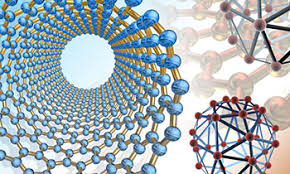Mechanical and Materials Engineering, Department of

Department of Mechanical and Materials Engineering: Faculty Publications
ORCID IDs
Taylor A. Stockdale http://orcid.org/0000-0002-7509-8466
Daniel P. Cole ; http://orcid.org/0000-0002-8160-6156
Jeffrey M. Staniszewski http://orcid.org/0000-0002-2469-3257
Michael R. Roenbeck http://orcid.org/0000-0003-3446-6653
Dimitry Papkov http://orcid.org/0000-0002-1792-7350
Steve R. Lustig http://orcid.org/0000-0001-5030-852X
Yuris A. Dzenis http://orcid.org/0000-0002-6645-3294
Kenneth E. Strawhecker http://orcid.org/0000-0002-3462-4757
Document Type
Article
Date of this Version
2020
Citation
ACS Appl. Mater. Interfaces 2020, 12, 22256−22267
https://dx.doi.org/10.1021/acsami.9b23459
Abstract
The processing conditions used in the production of advanced polymer fibers facilitate the formation of an oriented fibrillar network that consists of structures spanning multiple length scales. The irregular nature of fiber tensile fracture surfaces suggests that their structural integrity is defined by the degree of lateral (interfacial) interactions that exist within the fiber microstructure. To date, experimental studies have quantified interfacial adhesion between nanoscale fibrils measuring 10−50 nm in width, and the global fracture energy through applying peel loads to fiber halves. However, a more in-depth evaluation of tensile fracture indicates that fiber failure typically occurs at an intermediate length scale, involving fibrillation along interfaces between fibril bundles of a few 100s of nanometers in width. Interaction mechanisms at this length scale have not yet been studied, due in part to a lack of established experimental techniques. Here, a new focused ion beam-based sample preparation protocol is combined with nanoindentation to probe interfaces at the intermediate length scale in two high-performance fibers, a rigid-rod poly(p-phenylene terephthalamide) and a flexible chain ultrahigh molecular weight polyethylene fiber. Higher interfacial separation energy recorded in the rigid-rod fiber correlated with less intensive fibrillation during failure and is discussed in the context of fiber chemistry and processing. Power law scaling of the total absorbed interfacial separation energy at three different scales in the polyethylene fiber is observed and analyzed, and distinct energy absorption mechanisms, featuring a degree of self-similarity, are identified. The contribution of these mechanisms to the overall integrity of the fiber is discussed, and the importance of the intermediate scale is elucidated. Results from this study provide new insights into the mechanical implications of hierarchical lateral interactions and will aid in the development of novel fibers with further improved mechanical performance.
Included in
Mechanics of Materials Commons, Nanoscience and Nanotechnology Commons, Other Engineering Science and Materials Commons, Other Mechanical Engineering Commons


Comments
U.S. government work